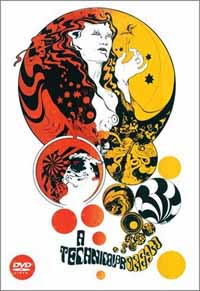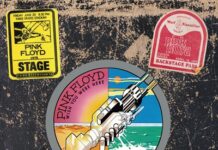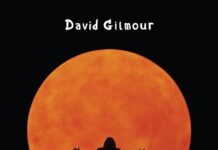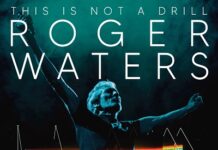Post-World War II was a stimulating and exciting time on both sides of the Atlantic. Music, art and poetry streaming out of the United States began to boil in Europe, particularly in England. While the Haight-Ashbury district was heating up with Ken Kesey and the Merry Pranksters, the Grateful Dead and Jefferson Airplane, a similar movement in London was underway. The players and chain of events that lead to the birth of the UK underground is extensively documented in the two-hour film, A Technicolor Dream. Driven by testimony from key participants, the DVD chronicles the changing tide of the 60s, propagated by a series of happenings that culminated with the emergence of its star attraction, Pink Floyd.
As in American cities like San Francisco and New York, the Beats’ influence on the growth of the psychedelic counterculture in London was the initial spark of what would follow. The film builds on this notion, touching on the International Poetry Incarnation on June 11 1965, where Allen Ginsberg and other Beat poets read before 7,000 patrons at the Royal Albert Hall. It would prove to be a pivotal turning point in its free mixture of cerebral, prosaic discourse with alcohol, drugs and love. In its wake, the London Free School began staging other events, fairs and happenings. This led to the establishment of London’s notorious underground club, UFO. And the club’s first house band was none other than Pink Floyd.
As the music and lights kept the heads tripping, mind-expanding landmarks like the Indica Bookshop and Gallery, as well as the underground newspaper the International Times, injected the scene with substance, culture and voice. Both John Lennon and Paul McCartney lent their support, and a new level of interest infused the city of London and the world at large. Then, when the International Times was busted for obscenity, John “Hoppy” Hopkins, a photographer and activist, organized The 14 Hour Technicolor Dream, an all-night “musical happening” held at Alexandra Palace on April 29, 1967. And sheer madness and wackiness ensued.
Two bands played at the same time at opposite ends of the hall. Frying on LSD, John Lennon was spotted and captured by rolling cameras. Meanwhile, light shows, impromptu dances, metamorphic readings, mind meldings and artistic experiments echoed and rumbled through the room. Scaffolding used to fix the house pipe organ became yet another prop in the happening. At dawn, Pink Floyd played what would become the climatic moment of the UK underground.
From there, the story of Pink Floyd takes on an effervescent glow with the group being the first on the scene to sign with a major record label. The film follows the group through the recording and release of their first album, The Piper At The Gates Of Dawn and the acid-fueled downward spiral of Syd Barrett. The guitarist’s life seems to have paralleled the rise and fall of the underground itself, which, by 1968, began to wither and fade under its own provincial weight of ideas, lifestyle and excess. As author Barry Miles wistfully observes in the final frame: “Everyone had to crash and go to bed.”
With the benefit of being told through new interviews with Hoppy, Miles, Pink Floyd’s Roger Waters and Nick Mason, record producer Joe Boyd, Soft Machine’s Kevin Ayers (looking especially bedraggled), Phil May from the Pretty Things, songwriter Pete Brown, manager Peter Jenner and an assortment of associates, luminaries and witnesses — A Technicolor Dream delves into every nook, cranny and vestibule and never ceases to astound the viewer.
The clipped performances of Pink Floyd and the Pretty Things do little to enhance the actual film, but fortunately that’s easily remedied in the Bonus section with complete videos for Floyd’s “Arnold Layne,” “Scarecrow” and “Astronomy Domine” (plus more interview footage of Waters, Mason, Miles, Boyd and Jenner). Pink Floyd fans, especially those of the Syd Barrett era, will thrill at each and every chapter of this full-scale examination of one of the most colorful periods in pop history.
~ Shawn Perry




















